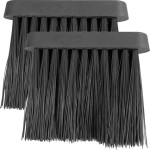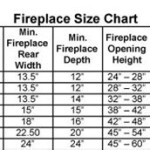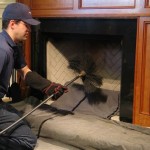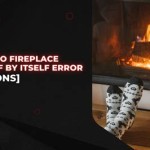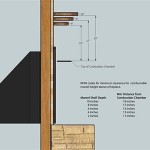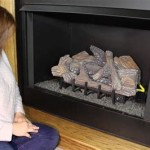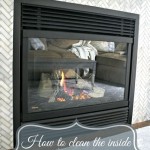TV Mounts Over Fireplace: Considerations and Best Practices
Mounting a television above a fireplace is a popular design choice in many modern homes. This configuration often maximizes space, creating a focal point in the room. However, installing a TV over a fireplace presents a unique set of challenges that must be carefully considered to ensure the longevity of the television and the safety of the installation.
The decision to mount a television above a fireplace necessitates careful evaluation of several factors, including heat exposure, viewing angle, installation complexity, and wiring management. Ignoring these elements can result in reduced TV lifespan, uncomfortable viewing experiences, and potential safety hazards.
Heat Exposure and TV Lifespan
One of the primary concerns when mounting a TV above a fireplace is heat exposure. Fireplaces, whether gas, electric, or wood-burning, generate significant heat that rises upwards. This heat can damage sensitive electronic components within the television, potentially shortening its lifespan and impacting picture quality. Excessive heat can lead to screen discoloration, component failure, and even complete TV failure.
The specific amount of heat a fireplace generates varies depending on its type, usage frequency, and venting system. Gas fireplaces typically produce less heat than wood-burning fireplaces, and properly installed venting systems can help to mitigate heat exposure to the area above the mantel. However, even with these factors considered, the area above a fireplace is generally warmer than other locations in the room. Therefore, careful consideration must be given to heat mitigation strategies.
Several strategies can be employed to minimize heat exposure. Installing a robust mantel can act as a heat shield, deflecting rising heat away from the television. The mantel should ideally extend outwards sufficiently to provide adequate protection. The deeper the mantel, the greater the protection it offers. Additionally, a heat deflector can be installed above the fireplace opening to redirect heat away from the TV. These deflectors are typically made of metal and can be custom-designed to fit the specific fireplace and TV size.
Monitoring the temperature above the fireplace is also crucial. A simple thermometer placed in the area where the TV will be mounted can provide valuable data on heat levels during fireplace operation. If temperatures consistently exceed the manufacturer's recommended operating range for the television, alternative mounting locations or more aggressive heat mitigation strategies should be considered. These operating ranges can typically be found in the TV’s user manual or the manufacturer's website.
Furthermore, the type of TV being installed can also influence its susceptibility to heat damage. Older plasma TVs were generally more sensitive to heat than newer LED or OLED models. However, even modern TVs are vulnerable to heat-related damage, and all precautions should be taken to protect them.
Optimal Viewing Angle and Ergonomics
Another critical consideration when mounting a TV above a fireplace is the viewing angle. Placing a TV too high can lead to neck strain and discomfort, especially during prolonged viewing sessions. Ideally, the center of the TV screen should be at or slightly below eye level when seated in the primary viewing location.
Mounting a TV above a fireplace often necessitates placing the screen higher than the ideal viewing height. This can result in an uncomfortable viewing experience, characterized by the need to tilt the head upwards for extended periods. Over time, this can lead to neck pain, stiffness, and even chronic musculoskeletal problems.
To mitigate this issue, a tilting TV mount can be used. These mounts allow the TV to be angled downwards, improving the viewing angle and reducing neck strain. The degree of tilt required will depend on the height of the TV above the floor and the distance of the seating from the screen. Selecting a mount with a sufficient range of tilt is essential to ensure optimal viewing comfort.
Another option is to use a full-motion or articulating TV mount. These mounts allow the TV to be pulled away from the wall and rotated to different viewing angles. This provides maximum flexibility in positioning the TV, allowing it to be adjusted to the ideal viewing height for different seating locations or viewing preferences. However, full-motion mounts require more space behind the TV and may be more expensive than tilting mounts.
The size of the TV also plays a role in determining the optimal viewing height. Larger TVs can be viewed comfortably from a greater distance, which may allow for a slightly higher mounting position without causing significant neck strain. However, even with a larger TV, it is crucial to prioritize ergonomic considerations and avoid placing the screen excessively high.
Before permanently mounting the TV, it is recommended to temporarily position it in the desired location to assess the viewing angle. This can be done by propping the TV up with temporary supports or using a cardboard cutout of the TV screen. This allows for a practical evaluation of viewing comfort and adjustment of the mounting position before committing to the final installation.
Installation Challenges and Wiring Considerations
Installing a TV mount above a fireplace can present several installation challenges. The wall above a fireplace is often constructed of brick, stone, or concrete, requiring specialized drilling equipment and anchoring techniques. These materials are denser and more difficult to penetrate than drywall, necessitating the use of a hammer drill and masonry drill bits.
Securing the TV mount to the wall is critical for ensuring the safety and stability of the installation. The mount must be anchored securely to the wall studs or masonry using appropriate fasteners. Using the correct size and type of screws or bolts is essential to prevent the mount from pulling away from the wall. For brick or stone walls, expansion anchors or concrete screws are typically required.
Wiring management is another important consideration. Power cables, HDMI cables, and other wires need to be routed from the TV to the power outlet and other devices. Concealing these wires can improve the aesthetics of the installation and prevent tripping hazards. Wire concealment options include running the wires through the wall, using cable raceways, or installing a recessed media box.
Running wires through the wall requires drilling holes in the wall and using a fish tape to pull the wires through. This option provides the cleanest and most discreet look, but it can be more labor-intensive and may require the services of a professional installer. Cable raceways are surface-mounted channels that conceal wires. They are easier to install than running wires through the wall, but they are more visible. Recessed media boxes provide a convenient way to hide wires and connections behind the TV. These boxes are installed within the wall and provide space for power outlets, cable connections, and other devices.
Before drilling any holes, it is essential to check for hidden pipes, wires, or other obstacles. Using a stud finder or wire detector can help to identify these potential hazards. If there are any pipes or wires in the area, it may be necessary to relocate them or choose an alternative mounting location.
If unsure about any aspect of the installation, it is recommended to hire a professional installer. A professional installer has the experience, tools, and knowledge to safely and properly mount the TV, manage the wiring, and address any potential installation challenges. This ensures that the installation is done correctly and minimizes the risk of damage to the TV or the surrounding area.
In addition to the physical installation, it's important to consider local building codes and regulations. Some areas may have specific requirements for TV mounts over fireplaces, particularly regarding fire safety and electrical wiring. Checking with local authorities or a qualified contractor can ensure compliance with all applicable codes and regulations.
Finally, consider the long-term maintenance and accessibility of the TV. A tilting or full-motion mount can make it easier to access the back of the TV for cleaning, cable management, or future upgrades. Planning for these contingencies can save time and effort in the future.

Can I Mount My Tv Above The Fireplace

Can I Mount My Tv Above The Fireplace

Above Fireplace Pull Down Tv Mounts Accessories Mantelmount Mounted Over

3 Alternatives To Mounting Your Television Above The Fireplace Avs

Is It Safe To Mount Your Tv Above The Fireplace Chimney And Wildlife

Tackling My First Mantelmount Mm720 Pull Down Tv Mount Install

Tmo100a Mount Tv Above Fireplace Mountable 55 Inches To 65 Tranquil

How To Mount A Tv Over Fireplace Vertical Chimney Care

Dynamic Mounting S Down And Out Swivel Mount Review Tv Mounted Above Fireplace Wall

Mantelmount Fireplace Tv Mount Review Av Gadgets
Related Posts


